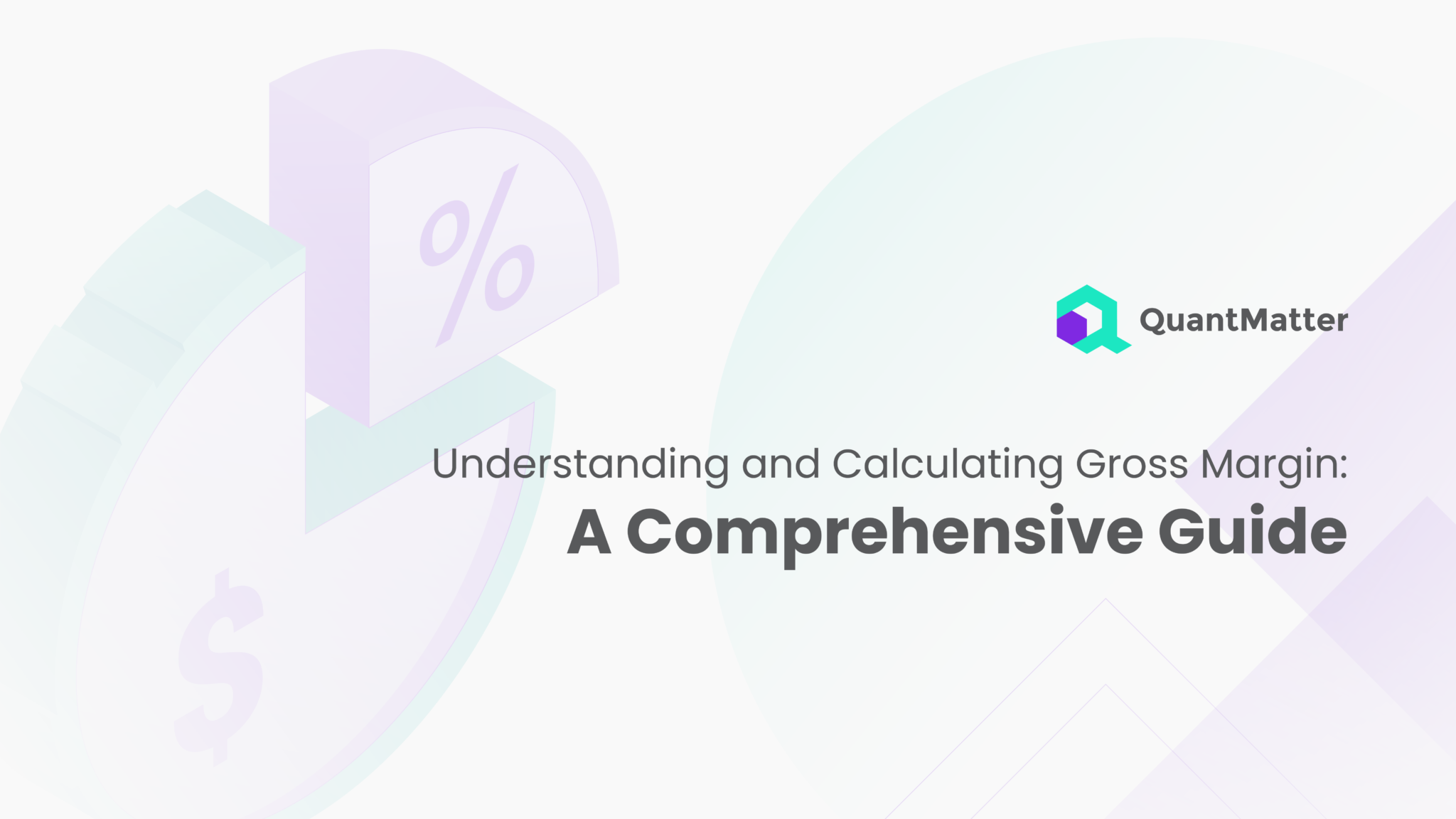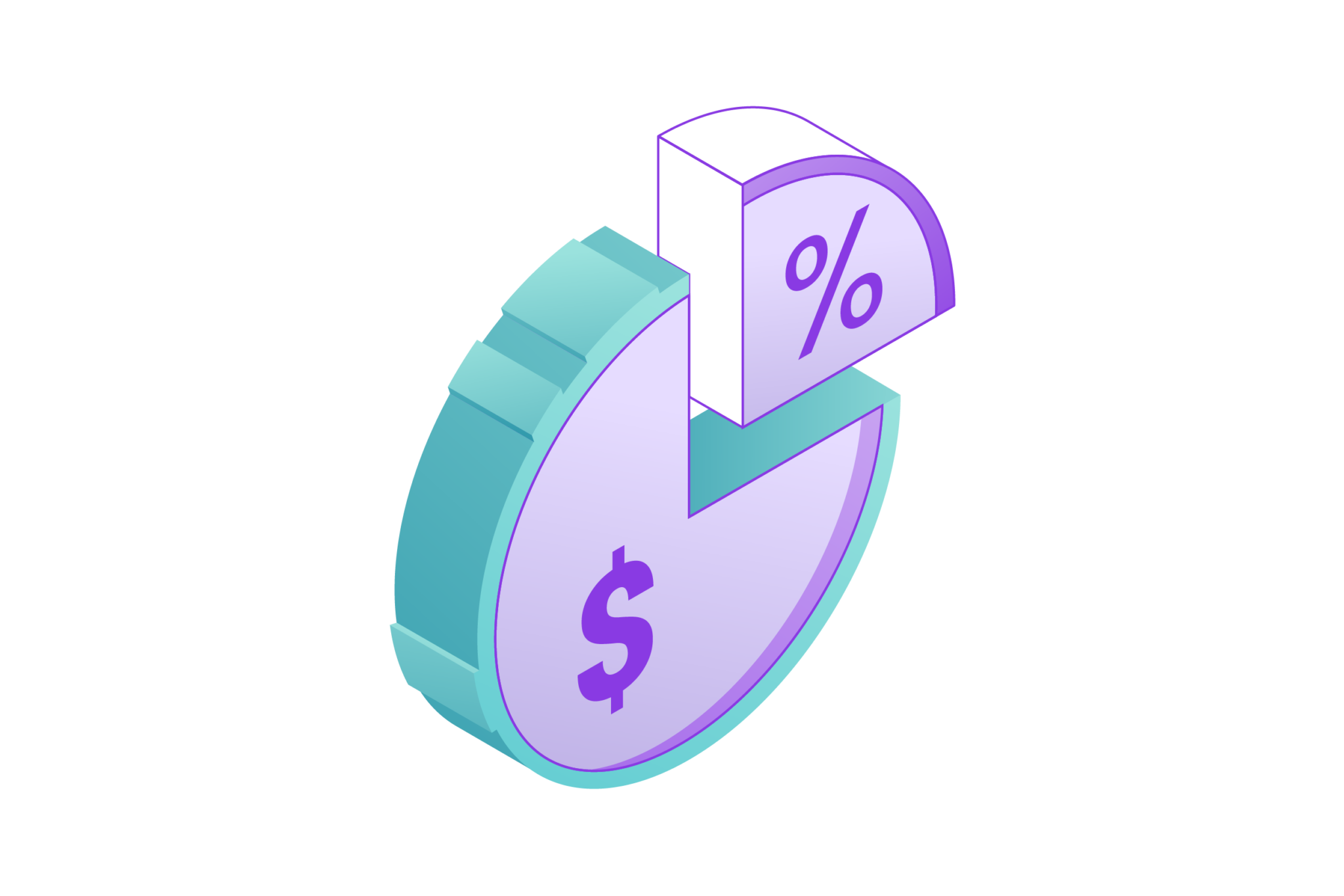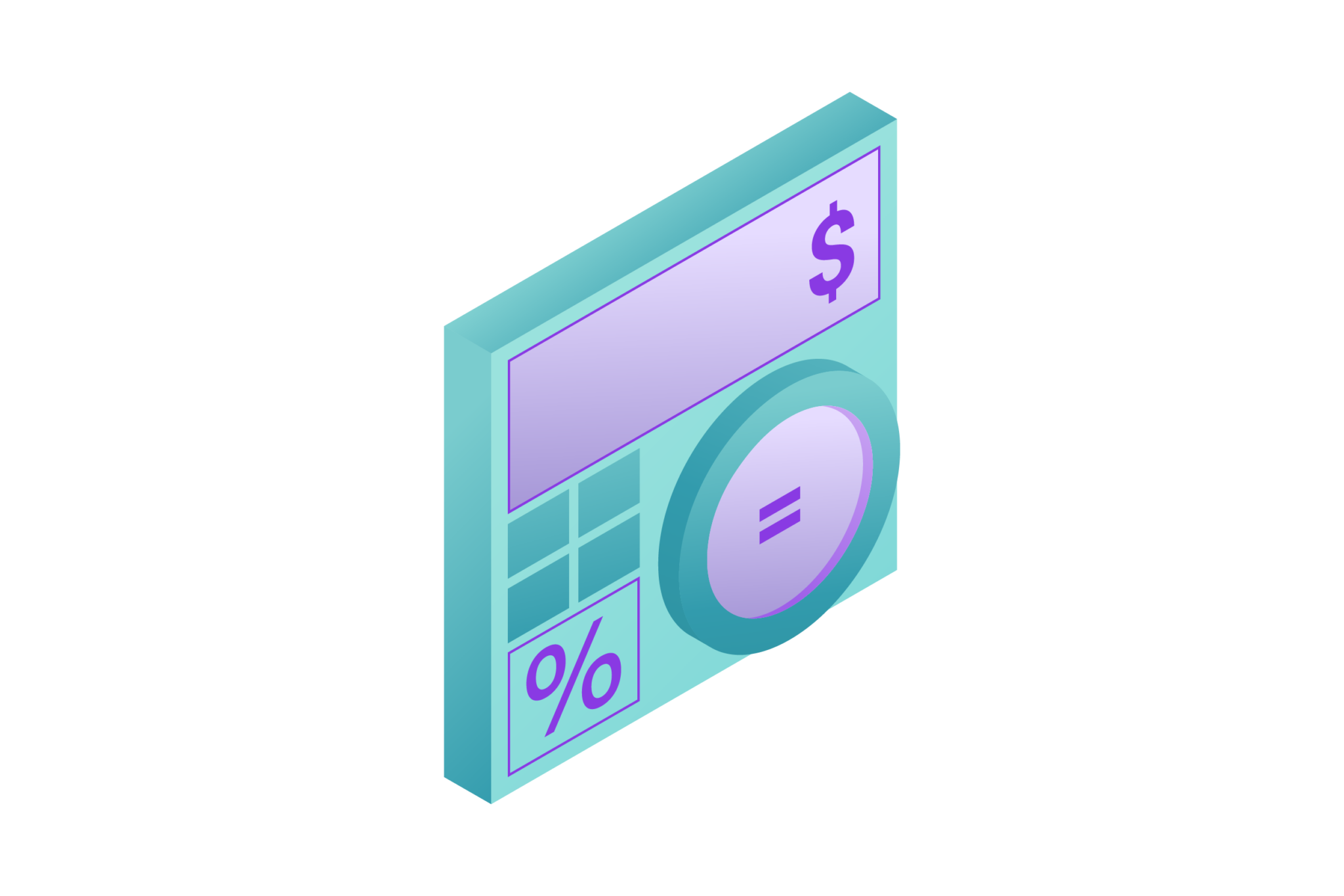
Gross margin is an important measure of financial performance that helps understand how profitable a company may be. It is a figure that reflects the percentage of revenue greater than COGS. Calculating and understanding gross margins is an important business practice for companies that seek to make informed financial decisions while creating sustainable growth. A company’s core business activity efficiency can be evaluated through this critical financial variable.
Thus, consistent tracking of the gross margin allows companies to find improvement points and perfect pricing strategies, enabling them to optimize overall performance. In other words, the gross margin provides a dynamic view of core profitability for any company and is thus essential to strategic financial management. The process of finding out the gross margin is an important step in determining how healthy and effective any business can be. This article will discuss the gross margin formula, its relevance to business management, and planning for strategies.
The Gross Margin Formula

The Gross Margin Formula is an important financial indicator used to measure a company’s performance in terms of its prime business activity. It acts as a percentage that defines the difference between revenue generated and the cost of goods sold (COGS). The formula, the percentage of which is obtained by subtracting COGS from total revenue and dividing it by revenue prior to multiplication by 100, brings out the efficiency with which a company produces and sells its commodities or services.
A higher gross margin suggests that a larger part of revenue is left after paying for direct costs to support production, which signifies a positive relationship with respect to profitability and operational efficiency. Alternatively, a weak gross margin could suggest issues with controlling production costs or setting appropriate prices.
However, it is pivotal to note that the interpretation of gross margin fluctuates from industry to industry. Many comparisons are conducted in the same industry because of the peculiarities of cost structures and market patterns that characterize each sector. For instance, industries that have high R&D costs may be able to lower their gross margins in the early stages of new product launches, assuming profits will increase once economies of scale are achieved.
Monitoring gross margin is an important business strategy that gives vision for decision-making. This is an important metric that companies can use to guide their pricing decisions, production costs and overall business strategy. By analyzing the trends of gross margin over time, a proactive approach to addressing operational inefficiencies or changes that take place due to alterations in market conditions can be achieved.
Finally, the gross margin formula is an important tool used by companies to measure and improve their financial performance. It not only gives an overview of present profitability but also enables entities to make decisions that can improve their competitiveness in the market.
The Significance of Gross Margin

The importance of gross margin recognition for businesses cannot be overstated because it is an important indicator of financial stability and efficiency. Gross margin indicates how profitable the core business activities of a company are since it shows the difference between its revenue and COGS in percentage terms. Here’s an in-depth look at why gross margin is crucial:
1. Profitability Assessment
A high gross margin does not only mean profitability but also shows the efficiency of operations. This efficiency goes beyond direct financial benefits, including the ability to manage resources for maximum benefit and reduce time wastage through simplified production and use of raw materials as well as labor. A consistently high gross margin is generally seen as a favorable signal to investors and stakeholders who believe that the company can convert much of its revenues into profit after considering costs directly associated with production. Also, it speaks to a core competency of the organization in maintaining its business and creating positive returns that set the stage for sustainable financial success. Companies that are able to obtain and sustain a high gross margin position themselves better for resilience in volatilities, investment potential for innovations, or having a competitive advantage out of the dynamics within an industry.
Balancing plays an essential role in profitability assessment through the gross margin process. The comparison of gross margins within the industry or against competitors gives companies essential information regarding their position. This benchmarking not only helps to identify improvement areas but also lays the foundation for strategic decisions. Companies that exceed market averages may use their high gross margins as a source of competitive advantage, while those that perform below par may have encountered operational inefficiencies or pricing issues that need correction.
2. Pricing Strategies
Gross margin is crucial in establishing the company’s pricing strategy, which reflects not only profitable but also competitive decision-making. Price pricing for companies is a complicated undertaking that depends on production costs, product value perception and demand in the market. Gross margin analysis is the process that decides how to proceed based on determining what pricing structure yields optimal profits without cutting into their clientele base. Informed pricing choices, which are supported by the analysis of gross margin dynamics, allow companies to establish competitive prices that will be appreciated by their potential customers.
Additionally, the analysis of gross margin cannot be excluded from assessing how promotions and discounts affect overall profitability. However, because these types of strategies are so typical when looking to gain customers and drive sales, they must be in line with the higher-level financial objectives set for the firm. Gross margin insights enable businesses to determine how competitive promotional activities are, allowing discounts and marketing initiatives that increase the bottom line. This way, it is ensured that businesses not only remain competitive but also achieve healthy profit margins despite dynamic market conditions through the strategic incorporation of gross margin analysis in pricing.
Also Read: Market Maker Options: Definition and How They Make Money
3. Cost Control and Efficiency
By analyzing the importance of gross margins in terms of cost control and operational effectiveness, it becomes clear that gross margins are more than static snapshots. Gross margins help a company highlight complex cost patterns over the years and see how COGS is affected by its individual elements. On the other hand, changes in COGS or long-term increases can initiate a more detailed analysis of supply chain management and production processes as well as raw material procurement. This proactive method enables companies to identify operational inefficiencies quickly and have a relevant cure, which is the cost control mechanism aimed at ensuring or improving their gross margins.
Sustained success always brings with it operational efficiency and gross margin, which become the performance benchmark. Consistent or rising gross margins represent a company’s effective cost management and production efficiency. This not only increases its short-term profitability but also makes it ready to compete in the long run. A business that focuses on and ensures operational efficiency through vigilant gross margin analysis has the inherent capability to adapt to changing market dynamics, technological growth and consumer preferences.
4. Strategic Decision-Making
The importance of gross margin in strategic decision-making comes out very clearly during moments when placements, investments, expansions or changes to the product range are being considered. For investments and expansions, gross margin analysis is used to calculate the expected payback. It is also an important element in explaining how such strategic decisions can affect overall profitability. Moreover, the comparison of gross margins across product lines improves effective portfolio management.
For instance, a firm can employ gross margin analysis in order to determine and then focus efforts on high-margin products. In contrast, products with lower gross margins could be subject to review, which may result in decisions aimed at possible changes and improvements or even terminations. This effective combination of gross profit analysis ensures a streamlined use of resources, maximizes returns and aligns the company’s product range with its wider business goals.
5. Risk Management
As a factor that is highly sensitive to changes from outside of the firm, gross margin plays an important role in risk management. Possible vulnerability of the company With this in mind, businesses can adopt preventative risk management strategies. For example, diversifying suppliers, securing long-term contracts or adapting pricing models to incorporate variable costs are actions that companies can take in order to minimize the effect of external uncertainties on their gross margins.
In addition, a complete view of gross margin allows for the recognition of market conditions or industry-related risks. The insight provided in this way helps companies form contingency plans and adjust their strategies to deal with challenges, strengthening organizational resilience in the face of uncertainties beyond their control.
6. Profitability Assessment
A large gross margin does not only demonstrate positive profits but also shows a firm’s dedication to sustaining appropriate financial margins. It is not only a short-term profit but a systematic and long-term initiative that involves the best use of resources to simplify production processes in order to control costs. Investors and stakeholders would frequently view a consistently high gross margin as an encouraging sign, indicating that the company has some strong support when it comes to generating profit or being able to endure any fluctuations in economic conditions. Financial stability aids businesses in directing resources towards innovation, growth opportunities and long-term initiatives leading to their longevity. In addition, a high gross margin increases the ability of an entity to attract investors and strategic partners, which boosts confidence in its financial stability.
In the case of profitability assessment, benchmarking in an industry or against competitors is critical. It serves as a relative measure of performance and allows the organization to identify spots where excellence is observed or areas where improvement can take place. Highs above industry averages highlight a competitive advantage, whereas lows prompt the reconsideration of pricing policy, production efficiency or other factors that influence gross margin. This comparative study ensures businesses place themselves in a superior position with regard to market standards, either meeting or surpassing industry levels.
Calculating Gross Margin Formula

One of the most critical skills for companies that want to not only gauge profitability but also make sound financial decisions based on it is learning and using the gross margin formula. The percentage formula basically measures the correlation between revenue and COGS, serving as an indicator of how effective a company is in its core business activities. The Gross Margin Formula provides a nuanced perspective on the transformation of total revenue into gross margins after deducting the cost of production.
It involves subtracting the Cost of Goods Sold (COGS) from the total revenue, dividing the resulting value by the revenue, and then multiplying by 100. This calculation offers a more subtle insight into the proportion of generated revenue retained as gross profit. In a practical scenario, if a company generates $500 thousand in revenue and incurs $200 thousand in COGS, the gross margin calculation is:
($500−$200)/$500×100 gives a gross margin of sixty percent.
This implies that 60 percent of the revenue is preserved as gross profit, signaling operational efficiency and financial stability. The systematic and ongoing evaluation of gross margins empowers companies to directly address pricing strategies, operational inefficiencies, remediation efforts, and the formulation of strategies aligned with long-term goals. This analytical approach enhances a company’s ability to navigate dynamic market conditions and make informed decisions for sustained success.
Also Read: Market Making: Strategies and Techniques
Apart from its mathematical importance, gross margin acts as one of the major tools for financial management because it helps companies understand their market better. A historical perspective on changes in gross margin patterns can inform future decisions based on a comprehensive analysis of these trends over time. For example, a steady or rising gross margin might indicate efficient cost control and operational effectiveness that could position the company for lasting success. Conversely, an eroding gross margin would call for further examination of cost structures and operational processes that could be pinpointed to make the necessary improvements.
In other words, the Gross Margin Formula is not just a mathematical calculation; it is an agile tool that enables us to take necessary actions based on actionable insights. Apart from its usefulness for financial assessment, its adoption has an impact on pricing strategies, operational improvements and strategic decisions that are essential to a firm’s competitiveness as well as sustainable performance.
Conclusion
By consistently measuring gross margin, companies receive important information about the quality of their cost management and manufacturing processes. High gross margins indicate that much of the revenue remains after incurring direct production costs, meaning good operational efficiency. However, a falling gross margin can trigger further scrutiny of the cost structure and specific measures to optimize business processes through cutting costs. This proactive strategy enables businesses to respond quickly in fast-moving market situations, remain competitive and protect their bottom line.
Another important determining factor in gross margin analysis is pricing strategy optimization. Appreciating the correlation between revenue and the cost of goods sold allows companies to set prices based both on market conditions and on a fair profit margin. Gross margin insights can serve as a strategic tool for companies to price their products differently depending on the market segment or product line and ensure they are well placed in relation to what customers expect so that firms maximize profitability.
Disclaimer: The information provided by Quant Matter in this article is intended for general informational purposes and does not reflect the company’s opinion. It is not intended as investment advice or a recommendation. Readers are strongly advised to conduct their own thorough research and consult with a qualified financial advisor before making any financial decisions.

I craft stories that make complex ideas clear. I simplify the blend of data science, machine learning, and crypto trading, showcasing how advanced tech and quantitative models analyze data for informed trading choices. Join me in exploring the realm of quantitative trading, where my narratives make intricate concepts easy to grasp.
- Alifia Berizkyhttps://quantmatter.com/author/alifia-berizky/
- Alifia Berizkyhttps://quantmatter.com/author/alifia-berizky/
- Alifia Berizkyhttps://quantmatter.com/author/alifia-berizky/
- Alifia Berizkyhttps://quantmatter.com/author/alifia-berizky/
